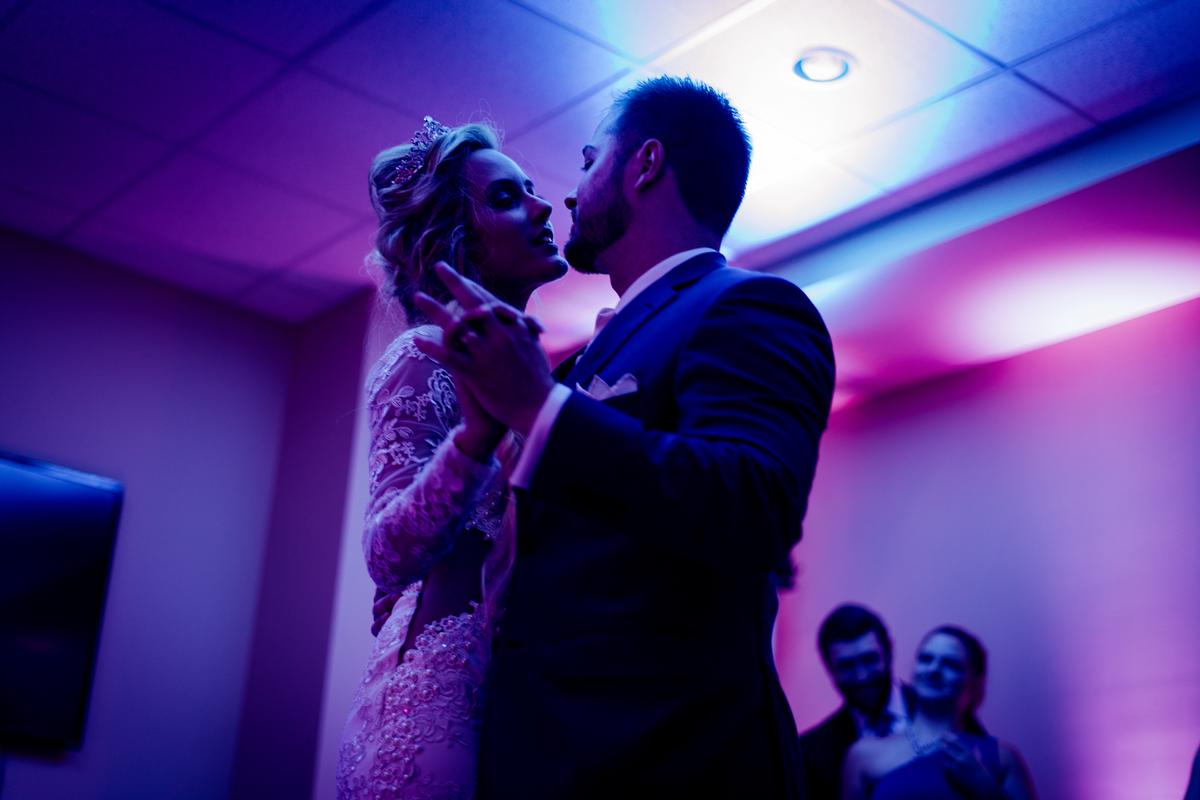In a dynamic societal landscape where legal paradigms constantly shift, the evolution of marriage laws offers a compelling study in the intersection of legislative modification and cultural evolution. One such interesting area of focus is Australian marriage law that traces a history spanning centuries. This in-depth exploration propels us into an engrossing journey through significant legislative milestones, contemporary regulations, meticulous impact scrutiny on diverse demographics, stimulating international comparisons, and anticipated future changes. Rich in context and peppered with pivotal moments, this discourse invites readers to delve into a deeper understanding of the legacies, realities, and possibilities of Australian marriage law.
History of Marriage Law in Australia
The Evolutionary Trajectories of Australian Marriage Law
Australia, as a multicultural nation with a rich and diverse social fabric, has experienced a fascinating evolution of marriage laws over the years. The roots of the marriage law in Australia trace back to the establishment of the colony in 1788. In this analysis, a deep dive is taken into this evolution, dissecting pivotal moments and significant changes in Australian marriage legislation.
The initial era, corresponding to the colonial period (1788-1901), witnessed the operation of English law, which set the legal age for marriage at 12 and 14 years for females and males, respectively. However, it’s worth noting that common law during this period enabled variations within the stringent confines, reflecting a surprising degree of societal flexibility beneath the formal facade.
For much of the 20th century, Australia’s marriage laws were guided by the 1961 Marriage Act. This legislation unified previous state-based legislation under federal ruling, placed emphasis on voluntary union, and entrenched notion of “marriage” as a union of man and woman. With a legal minimum age of marriage set at 18 years, exceptions were made for those aged 16 to 18, given parental or judicial approval.
The definition of marriage was contested in a significant socio-legal development that came in the form of the Family Law Act (1975). This act set forth a ‘no-fault’ divorce principle, emphasizing on the irretrievable breakdown of marriage, thereby shifting legal discussions to the realms of conjugal relationships and family structures.
In 2004, the Howard Government amended the Marriage Act, expressly defining marriage as ‘the union of a man and a woman to the exclusion of all others, voluntarily entered into for life.’ This politically charged decision was a reflection of the conservative perspective during this time.
Fast forwarding to the 21st century, one cannot neglect the progressive leap in Australian marriage law that came with the 2017 amendment. After a protracted years-long battle fuelled by public debate and a nationwide postal survey, the Parliament passed the Marriage Amendment (Definition and Religious Freedoms) Act 2017. This watershed moment redefined marriage as ‘the union of 2 people to the exclusion of all others, voluntarily entered into for life,’ effectively legalizing same-sex marriages.
The complexities and dynamism of Australian marriage laws reflect the nuanced transformation of societal attitudes and ideologies. This overview serves merely as an introduction to the intricate web that is the history of Australian marriage legislation. A thorough exploration requires an examination of intersectional dynamics, with considerations of Indigenous traditions, multicultural influences, and socio-economic factors.

Present Status of Australian Marriage Law
In the pursuit of a comprehensive understanding of Australian marriage law, it is vital to contextualize current regulations within the broader legal and social landscape. This discussion, having traversed historical underpinnings, now turns to contemporary frameworks.
The ramifications of prior enactments, including the 1961 Marriage Act and the consequential 1975 Family Law Act, coupled with later revisions in 2004 and 2017 under the Howard Government, set the stage for the current praxis of marital regulation.
Modern Australian marriage law is encapsulated within the Marriage Act of 1961, updated last in 2017 by the Marriage Amendment (Definition and Religious Freedoms) Act. This latest development broadened the definition of marriage to include, “the union of two people to the exclusion of all others, voluntarily entered into for life.” Said definition is fundamentally egalitarian, non-discriminatory, and fully inclusive of same-sex unions, a testament to Australia’s continued evolution towards inclusivity and equal rights for all citizens.
Regulation of nuptials in Australia is also subject to requirements, such as the minimum age for marriage being 18 years. Exceptions can be granted by a judge or magistrate for one partner in the prospective union to be aged 16 or 17, but not younger. Both parties must provide written notice of their intention to marry to their chosen authorized celebrant, at least one month prior to the wedding.
To ensure transparency and avoid potential familial discord, two people within the ‘prohibited relationship’ category, defined as being parents, siblings, or half-siblings, are forbidden to marry. The law also dictates that both parties must not be lawfully married to another person at the time of their marriage. Polygamy, while recognized in some societal settings, is not legally endorsed under Australian marriage law.
Furthermore, the current law accords various religious and civil celebrants the right to refuse to solemnize a marriage if it conflicts with their beliefs. This includes both religious organizations and individual ministers. This facet of the law was deeply embedded within the 2017 amendment, protecting the religious freedoms of those who hold traditional views on marriage.
Marriages traditionally conducted by Aboriginal and Torres Strait Islander people, also known as ‘customary’ or ‘traditional’ marriages, are recognized, but only if they fulfill the obligations outlined in the Marriage Act.
It appears paramount to note that while Australian marriage law has navigated a transformative journey, embodying trends of societal progress and confronting inherent complexities, it is not entirely devoid of criticism. There are ongoing debates surrounding issues such as the recognition of polyamorous and underage marriages, primarily due to multicultural influences and Indigenous traditions. While existing regulations suffice, the expectation of future metamorphosis is not entirely quelled.
In presenting this exploration of Australian marriage law in its current state, it is evident that the interplay between legislation, social progression, and inherent complexities yields a dynamic legal framework. It demands continuous adaptation and reflexivity to sustain alignment with societal trends and values, alongside ensuring the protection and legitimization of all forms of marital unions. Hence, as we cast our gaze forward, it becomes palpable that an exhaustive comprehension of such regulations is not a fixed endeavor, but an ongoing process of adaptation and evolution.

Photo by skyestudios on Unsplash
Impact of Marriage Law on Various Demographics
Building upon the historic underpinning of Australian Marriage law, our examination now shifts towards understanding the varying repercussions of said law on different demographic segments. Elucidating this complexity requires an in-depth analysis of multiple dimensions that intertie the marriage law terrain and its heterogeneous impact.
To comprehend the disparate effects of these laws, it is crucial to gauge the implications of some critical mandates. For instance, the 1961 Marriage Act not only clarified the definition of marriage but also put forth significant prerequisites for marriage. Minimum age restrictions (18, or 16 with court permission) have had a direct effect on socio-economic groups where early marriages are prevalent. Moreover, the stipulation of giving one month’s notice before marriage subtly impacted more spontaneous or unconventional unions.
The limitation on prohibited relationships that bar certain degrees of consanguinity or affinities from marrying, excluding some Indigenous traditions, unveiled another layer of disparity. The prohibition of polygamy presented a controversial interaction with cultural traditions where polygamous marital practices are considered normative.
Endowed with rights to refuse solemnizing a marriage based on religious beliefs, religious and civil celebrants’ right emerged as a significant provision under the law. However, this right has been a topic of debate due to its potential to create a disadvantage for certain demographic groups, particularly in cases involving interfaith or same-sex marriages.
Delving into the realm of customary marriages, the enigmatic aspect of Aboriginal and Torres Strait Islander unions poses questions of legal recognition and cultural autonomy. This points to another schismatic effect on the indigenous population where traditional practices diverge from mainstream Australian marriage law.
As we navigate these variances, one must not overlook the criticisms and ongoing debates echoing across the Australian society. Arguments surrounding the enduring patriarchy woven into the fabric of marriage law or the schism between secular and religious ideologies have consistently sparked controversy.
Seminal to this discourse is the 2017 amendment to the Marriage Act which legalized same-sex marriages. However, it also rekindled discussions about the evolving definition of marriage, the necessity for more inclusive legislations, and the immediate and long-term impact on society’s minority groups.
In conclusion, the ramifications of Australian marriage law undeniably extend to its diverse demographic segments, sometimes resulting in polarization. To alleviate these disparities it becomes imperative to foster a culture of unceasing adaptation and evolution within the legislative framework. This commitment to continuous reform is essential if Australian marriage law is to truly embody its principles of fairness and equality. Striving for this goal will prompt us to critically analyze, diligently respond, and ultimately bring forward a more egalitarian society.

Photo by tingeyinjurylawfirm on Unsplash
Australian Marriage Law Compared Globally
As we delve further into the comparative study of Australian marriage law, it becomes essential to explore its distinctive aspects in the international context. The uniqueness of legal standing in Australia can be better explored by drawing parallels with global counterparts, which offer intriguing perspectives on legal adaptations for marriage.
The singular components of Australia’s marriage law, such as minimum age restrictions, acknowledge the important consideration for the legal capacity of a couple to marry. Australia’s Marriage Act unequivocally mandates that both parties must be a minimum of 18 years old, an age shared with the majority of countries worldwide, including the United States and Canada. However, nations such as Iran and Saudi Arabia allow marriage of individuals as young as 15 and 16, respectively, thus presenting a stark contrast.
Another distinct and progressive feature of Australian legislation is the requirement for couples to give one month’s notice before solemnizing their marriage. This considered provision is not commonplace globally, with spontaneous marital unions legally permissible in countries such as the United States, especially within the infamous “wedding chapels” of Las Vegas.
The intricate dynamics involving the prohibition of certain relationships creates an interesting talking point. Australia, like most nations, prohibits marriage in certain degrees of consanguinity or affinity, as outlined under the Marriage Act. This is a commonality across the globe, including countries like France, Japan, and Canada.
Yet, there exist areas of disjunction, primarily relating to cultural norms vis-a-vis legislations concerning marital practices such as polygamy. While Australia prohibits polygamous marriages, some countries in Africa and the Middle East legally permit such unions.
A remarkable attribute in the Australian legal system is the provision allowing religious and civil celebrants the right to refuse to solemnize a marriage based on religious or conscientious objections. In contrast, countries like Canada protect celebrants by law from being forced to officiate at marriages that contravene their religious beliefs.
Recognition of the indigenous community’s customary marriages is another unique facet of Australian marriage law, albeit a contested one. Varied recognition of indigenous unions worldwide highlights the delicate balance between cultural respect and legal frameworks. For instance, South Africa acknowledges customary marriages of its indigenous peoples under the Recognition of Customary Marriages Act.
However, legal adaptations in marriage law are often fraught with debates and criticisms, pertaining to concerns on patriarchy, ideological battles between secular and religious ideas and notions of equality. The recent legalization of same-sex marriages in Australia, ushering in waves of discussion over inclusivity and evolution of the definition of marriage, is reminiscent of such debates in countries such as the United States, United Kingdom, among many others.
The continual legal evolution in response to societal shifts emphasizes an enduring narrative in the Australian subsets of matrimonial unity. This call for enriched dialogue indicates the necessity for creating inclusive legislation that transcends traditional norms. It emboldens the need for continuing adaptation of the Australian marriage law discourse, reflecting the evolving realm of human rights, fairness, and equality.

Photo by jonathanborba on Unsplash
Future Direction of Australian Marriage Law
As noted earlier, the journey of Australian marriage law continues to progress as the nation itself does. Inextricably intertwined with the tangled threads of societal values and beliefs, the law has acted as both a mirror reflecting the zeitgeist and a catalyst spurring societal change. The future trajectory of Australian marriage law, based on present trends, can be discerned through a careful scientific analysis.
Australia’s minimum age requirement for marriage is currently set at 18 years. With some exceptions granted for 16 and 17-year-olds, this age provision aligns with international norms. However, a rising global trend advocating for elevating the minimum age to 21 befits scrutiny. While studies indicate that increasing the minimum age of marriage could positively impact socio-economic benchmarks, such an amendment could also collide with cultural norms and individual choices.
The current requirement for affianced couples to provide a one-month notice ahead of marriage reflects an administrative procedure designed to permit the identification of potential legal impediments. Appraisals of this stipulation have largely been positive, but future re-evaluations may examine the related logistical burdens, particularly amongst migrants and marginalized communities.
The prohibition of marriages between individuals of certain degrees of consanguinity or affinity reflects a universal trend. However, growing awareness and acceptance of genetic science may trigger reassessments of these restrictions in the future.
The issue of polygamous marital practices occasioned by cultural traditions remains significant. Australia’s prohibition of polygamy may be subjected to future scrutiny juxtaposed against cultural relativism and the principle of multicultural respect, particularly given Australia’s increasingly diverse demographics.
The rights of religious and civil celebrants to refuse to solemnize a marriage based on their beliefs could be an area of legal evolution. As Australian society becomes more secular, there may be increasing pressure to reassess this provision, particularly if perceived to clash with anti-discrimination legislation.
Recognition of indigenous customary marriages raises the interplay of customary law with mainstream legal structures. Future amendments to Australian marriage law may attempt to harmonize the two, protecting indigenous cultural autonomy whilst ensuring national legal consistency.
It is crucial to observe the debates and criticisms surrounding recent legal adaptations in marriage law, specifically the legalization of same-sex marriage. Although Australia passed the 2017 amendment to legalize same-sex marriages, discussions around the evolving definition of marriage continue, which may spur further evolution in marriage legislation.
Finally, Australian marriage law’s future trajectory will likely continue to encompass more inclusive legislations to reflect changing societal norms and attitudes. The increased visibility and recognition of gender diversities necessitate ongoing reform and adaptation, ensuring Australian law privileges fairness, inclusivity, and equality. By fortifying the intersection of law and cultural evolution, the future of Australian marriage law aims to become a beacon, illustrating not just the nation’s historical journey, but also its stride towards an egalitarian society.

The course of Australian marriage law, characteristically marked by transformative shifts, paints a vibrant picture of societal progress and adaptation. As we broach the future, it becomes increasingly significant to take note of the potential shifts in legislation and their subsequent societal impacts. Scrutinizing the trends and inspecting the possibilities can equip us with valuable insights and foster more inclusive legal frameworks. While the future carries its share of uncertainties, the exploration of the past and present, a comprehensive understanding of diverse impacts, and a global comparative study reinforce our understanding and equip us for the forthcoming chapters in Australian marriage law.






